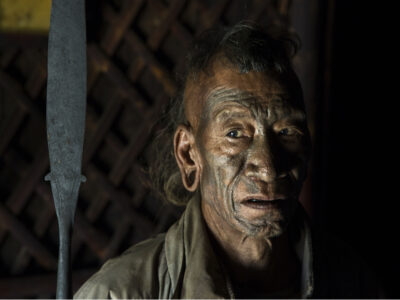Sports & nature
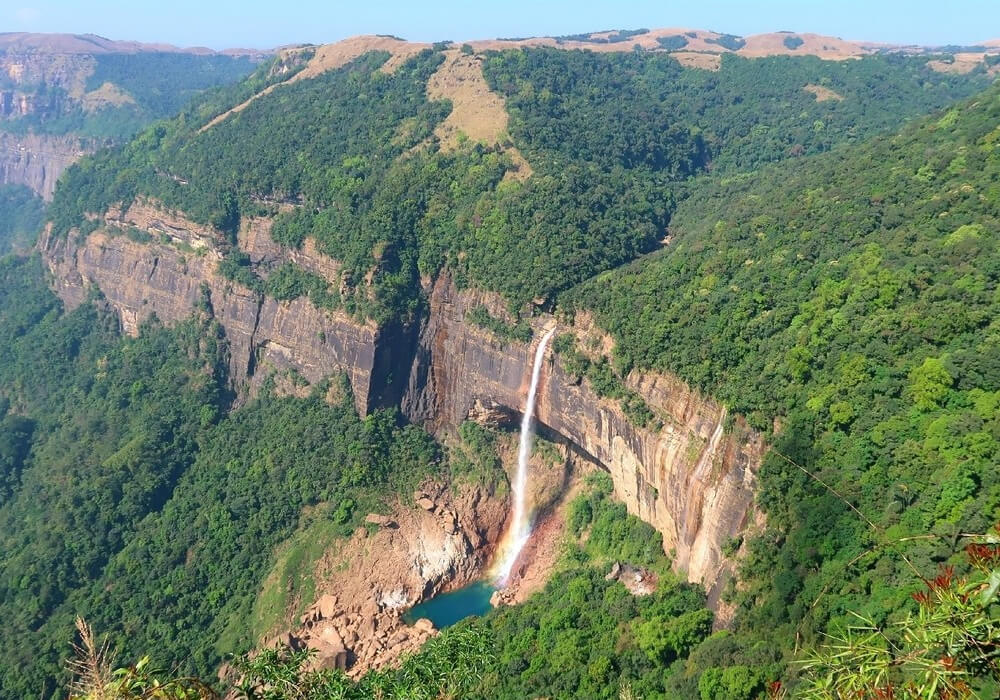
East Khasi Hills
East Khasi Hills is perhaps best known for Sohra (Cherrapunjee), geographically famous for being the wettest place on earth, and also Shillong, one of the most beautiful hill stations in India.
It is one of the populated districts of Meghalaya, having many tourist destinations to visit. Mawlynnong which is known as the cleanest village of India is situated in this district. The double-decker living root bridge is somewhat that tourists should experience. Mawphalang which means ‘grassy stones’ is known for the sacred forests and living root bridges.
In fact, the entire region that forms the central part of Meghalaya is richly endowed with natural beauty. Everywhere you go, you will never cease to be mystified by the spectacular charm the state offers.
The enchanting Meghalaya boasts of a diverse array of forests that capture the imagination of any and every adventurous soul who has set foot there.

Shillong
Known for the manicured gardens at Lady Hydari Park, Shillong is a hill station in northeast India and the capital of the state of Meghalaya which is the only hill station in the country that is accessible from all sides.
The name Shillong is derived from U-Shyllong, a powerful deity that is situated at an altitude of 1,491m above sea level. Shillong is one of the important tourist destinations in the northeast that is often referred to as the "Scotland of the East" due to its striking similarity with the Scottish highlands.
Here, taking a mild walk or riding slowly a vehicle on the road alongside Khasi hills gives many glimpses of the valley and a clear perception of the beauty epitomized by Nature in the capital of Meghalaya. Very easily people find themselves lost counting the ways Nature on hills can surprise them. The same theory applies in Shillong as well, especially during monsoons, that’s why you shouldn’t miss exploring Shillong on your Meghalaya trip.
Attractions: Lady Hydari Park, Ward’s Lake, Cathedral Catholic Church, Capt. Williamson Sangma State Museum, Don Bosco Centre for Indigenous Cultures, Golf Course, Spread Eagle Falls, Sweet Falls, Ever-Living Museum, Elephant Falls & Shillong Peak
Best Time to Visit Shillong: The best time is considered to be from September to May, however, to enjoy eight waterfalls and lush greenery in the area no season could be better than Monsoon.
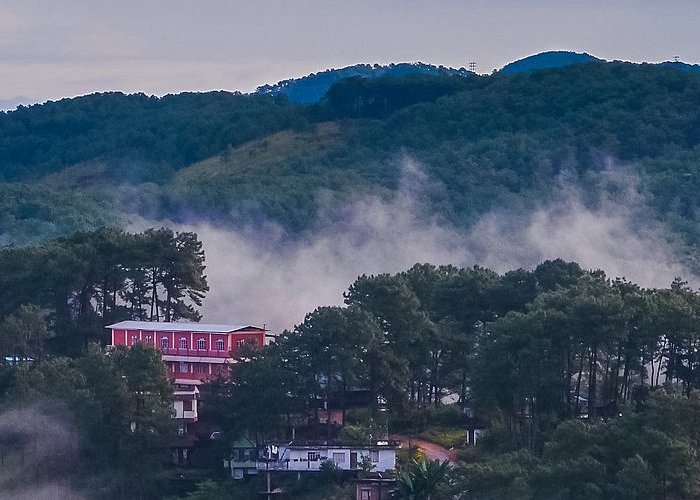

Cherrapunjee
Known for its living root bridges, made from rubber trees, Cherrapunjee, also known as Sohra, is a high-altitude town in the northeast Indian state of Meghalaya. It is 56 km from Shillong and is literally the high point of any visit to Meghalaya that is set upon a plateau on the southern slopes of the state.
Sohra is dotted with waterfalls cascading over deep gorges. The swift-flowing rivers and streams flow in a southerly direction to the plains. It is one of those ultimate eco-friendly destinations, a place renowned all over the world for having the privilege of receiving the highest rainfall in the world.
A unique annual meteorological phenomenon directly influenced by the southwest monsoon and the northeast winds. The heavy monsoon rains over these mountains undoubtedly create in Sohra one of the rarest bio-diverse vegetations in the world.
Set against the backdrop of a breath-taking landscape, it is a place to discover the Indian summer monsoons. Sohra, truly a beautiful corner in northeast India, waiting to be discovered and explored by you.
Attractions: Mawkdok Dympep Valley View, Sa-I-Mika Park, Dain-Thlen Falls, Noh-Kalikai Falls, Ka Kper Syiem Sohra, Nongsawlia, Mawmluh Cave, Eco Park, Mawsmai Cave, Noh-Sngithiang Falls, Thangkharang Park, Ka Khoh Ramhah, Kynrem Falls & The Lawshynna Cave
Best Time to Visit Sohra (Cherrapunjee): Cherrapunjee receives heavy rainfall throughout the year. So, the best time to visit Cherrapunjee is between the months of October and May, when the weather remains cool and pleasant.
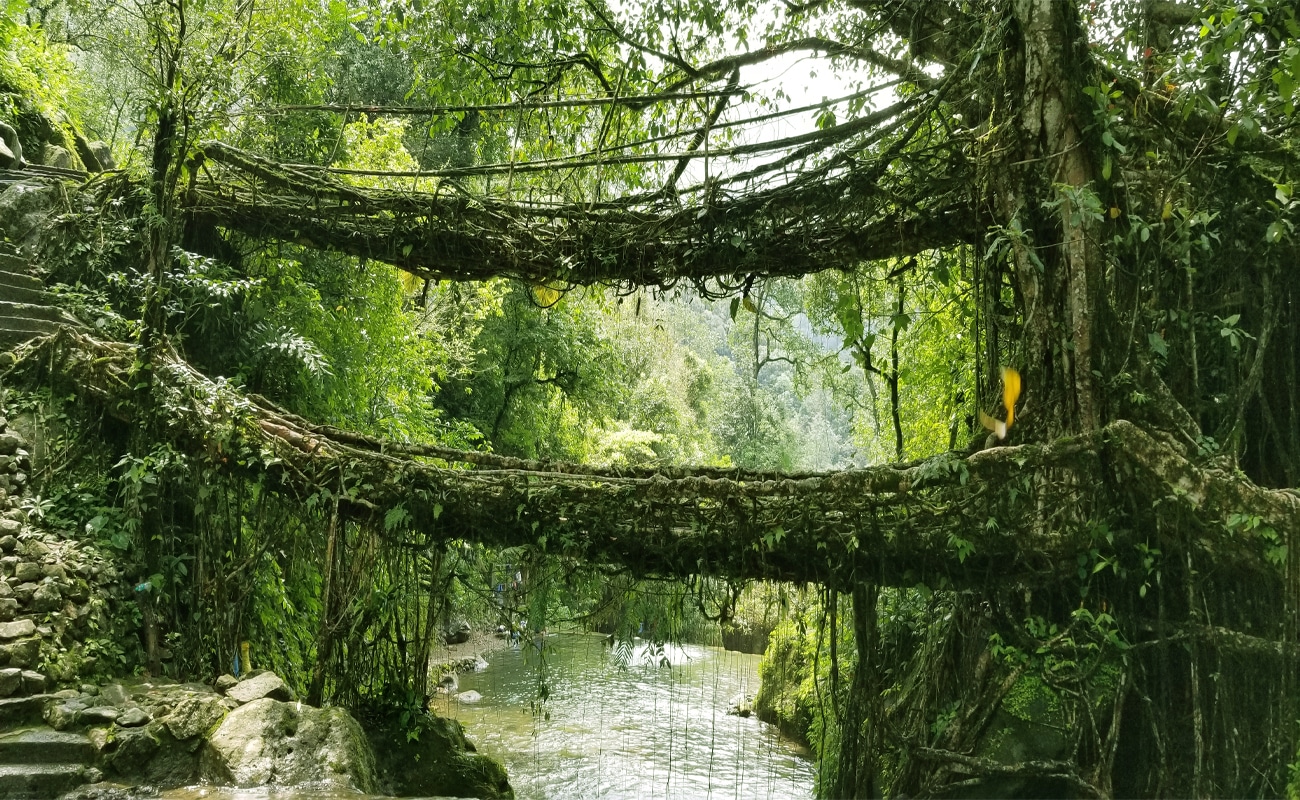
Nongriat
Beyond the cafes of Shillong, below the waterfalls of Sohra, after climbing down 3,500 steps, lies a small forest village of Nogriat. Popular for its well photographed Double-Decker Root bridge, a lot of visitors visit the village for a day hike. But to really know the folklore of the “Sacred Grove”, you need to spend a few days here, in Nongriat.
Nongriat is a combination of two words – “Nong” meaning village, and “Riat” meaning cliff or a ridge, so “a village surrounded by ridges”, and that’s exactly what Nongriat is. People of Nongriat were once the inhabitants of a neighbouring valley, “Thied Dieng”. They were experts in building useful things using tree roots.
“Weaving” the Root Bridges
Some 250 years ago, they experimented with planting rubber trees on either side of a River and waited and weaved the roots to strong root bridges over years. The result was the art of building root bridges, that has endured the forces of Mother Nature for centuries. No particular family or group did the work, but the whole village cooperated with the forest to build these bridges. The first root bridge was built over the Umshiang River some 250 years ago but was overflown during a heavy Monsoon season. This encouraged the villagers to build another one on top of the old one. This gave birth to the idea of the Legendary Double-Decker Root bridge. The idea was passed on from one generation to the next, and from village to village. The original inhabitants of Nongriat in the “Thied Dieng” valley perfected the knowledge of weaving these amazing bridges and brought it with them when they migrated to the current valley.
Tale of Nongriat – of survival and adaptation
Around 250 years ago, a terrible war was fought between “Mawphu” village and the original Nongriat village in the Thied Deing valley, over the fertility of the land. Nongriat lost and the surviving inhabitants fled to the present valley. But the Mawphus was not done yet – they sent a bunch of sacrificial bulls to rampage the village and the land, but the Nongriat inhabitants captured them and ate almost all of them. This victory was short lives as the inhabitants who ate the meat died, as the meat was poisoned by the Mawphus. Everyone died except a family of 4 brothers and a sister. The survivors decided split into five clans and moved around in the valley to build and repopulate 5 villages, namely, Tyrna, Nongriat, Mynteng, Ramdait, and Nongkroh. This adaptive distribution of the surviving population ensured that the Nongriat bloodline survived any future aggression by the neighboring villages or kingdoms. In hindsight, the strategy definitely worked. The population multiplied and prospered over the years in all five villages. The central village of Nongriat now has about 40 households and a population of around 250 people. The villagers are short and thin, but strong and healthy. They live long, due to the abundance of clean water, food, and rich oxygen from the rainforest.
Ri Khasi (or “Khasiland”) was the original name of the kingdom which was ruled by 30 kings and 12 dolois. It was renamed Meghalaya when the “Agreement of Accession” to India in 1948 was signed. The Khasi tribe has no script or written language of their own. The stories of history are passed on from generation to generation. It is believed that their forefathers originated from Cambodia and were known as the Khmers or Mon Khmers. Most of the migrants, who are now known as Khasis, ended up in these lush forested hills, which were uninhabited and unclaimed are now called the Jantia Hills.
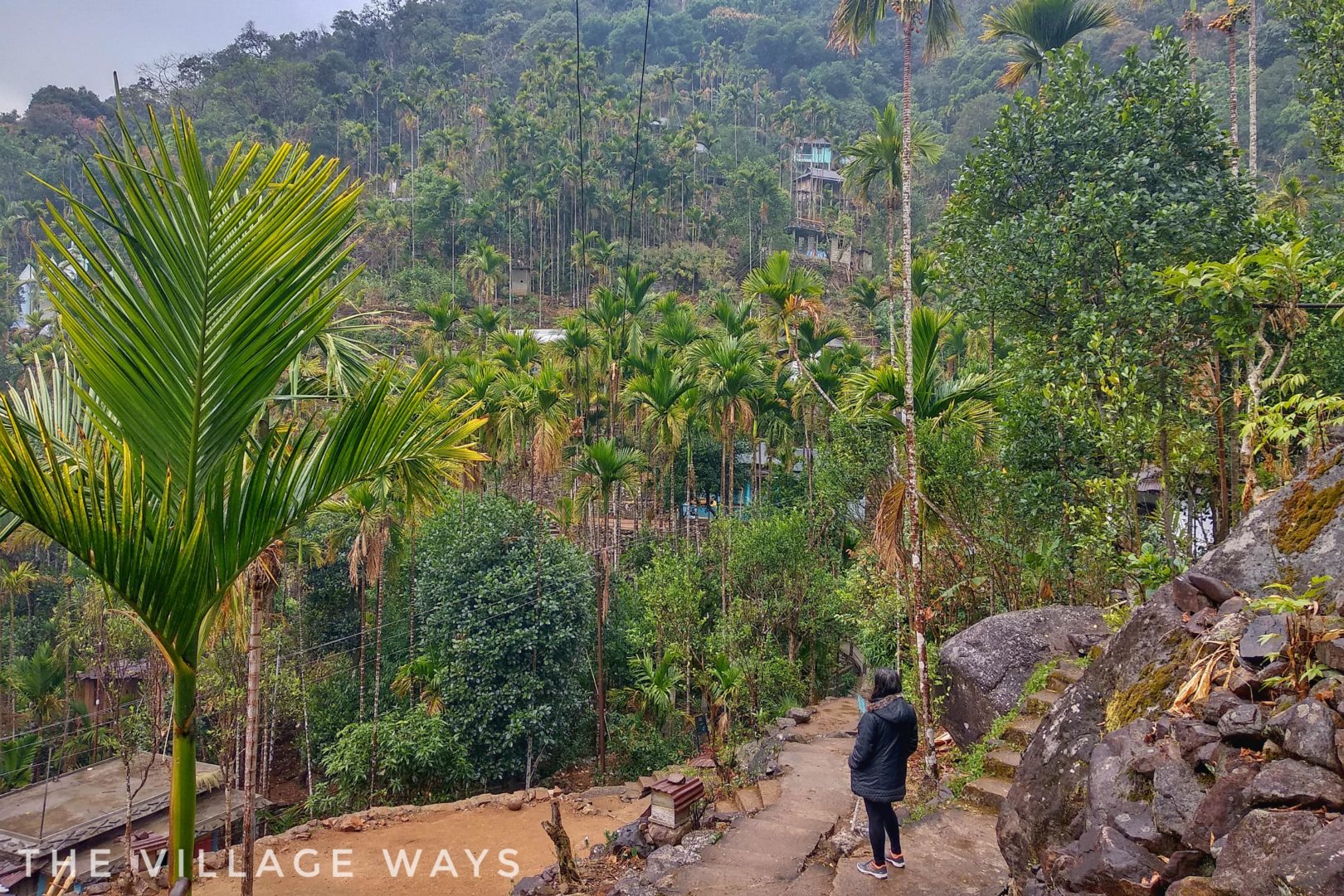
Exploring Nongriat
It would be right to say that Nongriat Valley has a microclimate of its own. As compared to Sohra (Cherapunjee), which is higher up on the plateau, Nongriat has a much balance climate. It is not as cold as Sohra as it is about 1,000 meters below, and the cool breeze flows through the three rivers and forest of the valley during the summer season. Clean water and the thick rainforest make it an ideal place for some relaxed time. The valley is abode to eight bridges and a cave not fully explored till date. The Double-Decker Root Bridge is the start attraction, but one of the most amazing places in the valley is Rainbow waterfall. The hike to the falls itself is awe-inspiring as you cross the numerous natural pools, root bridges, and few suspension bridges. The village is rich with culture and heritage, with a sense of living in a time period not yet adulterated by society.


Mawlynnong Village
Notable for its cleanliness, Mawlynnong village located in the East Khasi Hills of Meghalaya, also referred to as ‘God’s own garden’ has won the acclaim of being the cleanest village in Asia in 2003.
It is situated 90 km from Shillong and besides the picturesque village, offers many interesting sights such as the living root bridge and another strange natural phenomenon of a boulder balancing on another rock.
The village is quite pretty, especially in the monsoons when there is lush greenery all around, with waterfalls paving the way to small streams and abundance of flowering orchids dangling from the trees and hedges add to the beauty of the village.
Mawlynnong’s fame is now drawing an endless stream of guests from across the country and abroad which is an artist’s delight and the sort of getaway that would titillate creative writers and poets.
Attractions: Living Root Bridge, Balancing Rock of Mawlynnong, Byrdaw Falls, Church Of The Epiphany, Urkyrming Waterfall, Wah Rymben, Rymben Falls & Mawshun Cave
Best Time to Visit Mawlynnong Village: June to November
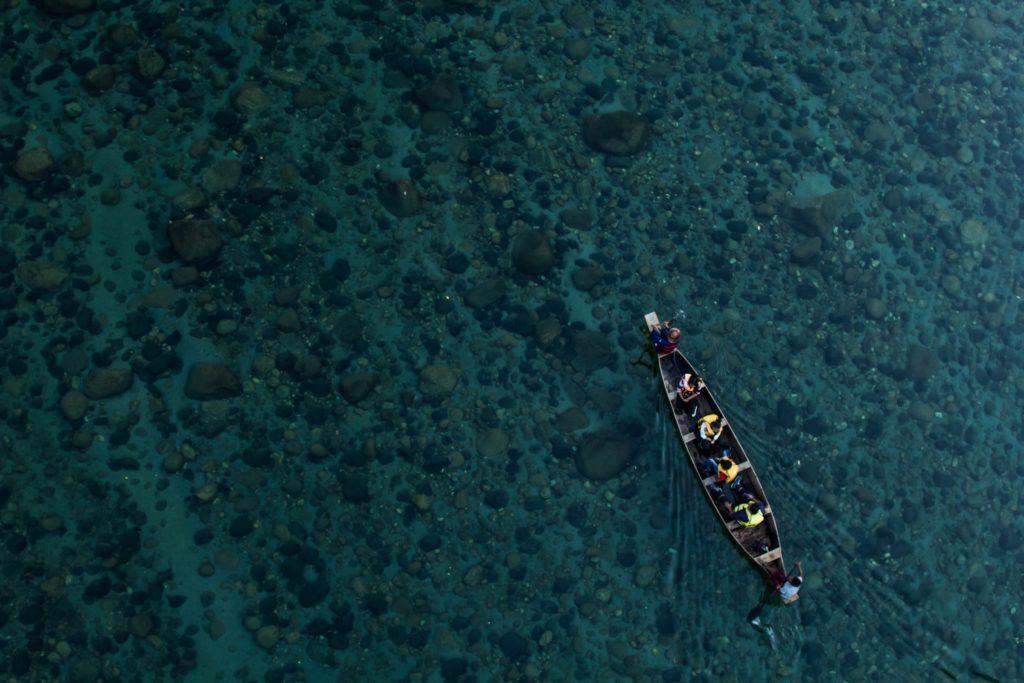
River Umngot/Dawki
Dawki, Duki or Dauki is a picturesque town in the district of West Jaintia Hills in Meghalaya. Snuggled between the borders of India and Bangladesh, Dawki developed as a trading town for the two countries. But as explorers started discovering the real charm of the place, it soon became open to tourism and started welcoming travelers from far and beyond to experience the wonders of nature here. The lush greenery, the play of green and blue in the rivers, the crystal clear streams, and the serenity of the surroundings make this place a worthwhile retreat.
Whether you want to do an introspective solo trip, a romantic getaway in nature or a fun-filled break with friends and family, Dawki makes for the perfect setting for your first post-covid trip. But before that, you must figure out the right time. Like for solo trips or family vacations, the months of January, February, June, and July are good. But, for couples, Dawki weather is the best between September and November, the weather being more favorable.











